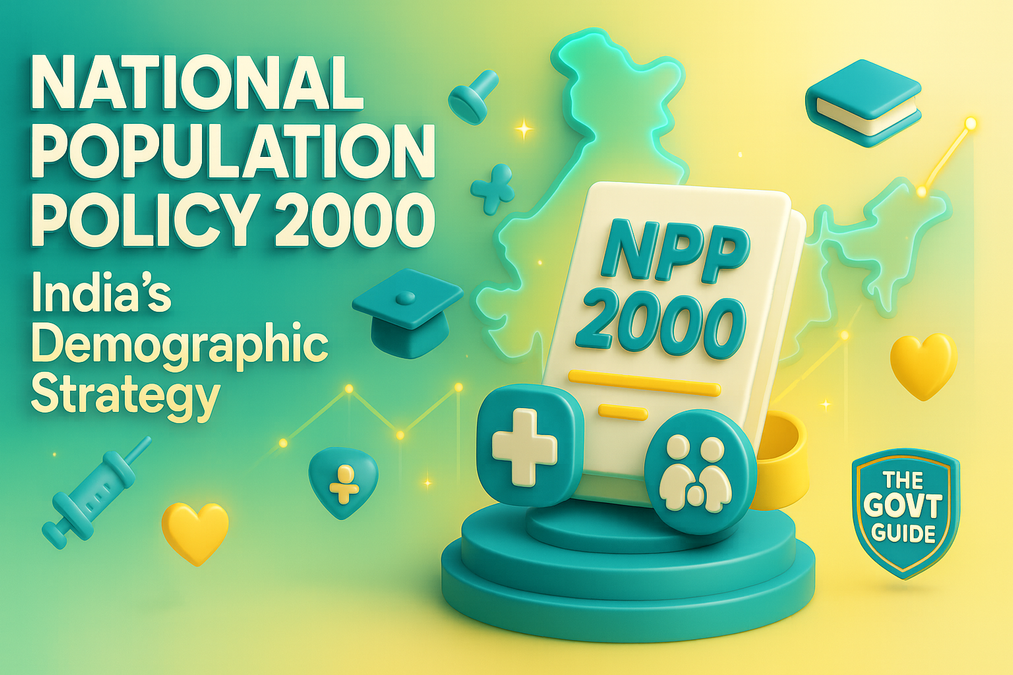National Population Policy 2000: India's Demographic Strategy
National Population Policy 2000: India's Demographic Strategy

The National Population Policy 2000 (NPP 2000) is a landmark initiative by the Government of India to address population challenges through sustainable and people-centered strategies. Introduced as a culmination of decades of family planning efforts, this policy aims to balance population growth with socio-economic development. This article explores the NPP 2000, its objectives, and its impact on India's demographic future.
Key Insight: The NPP 2000 builds on India's Family Planning Programme launched in 1952, emphasizing voluntary and responsible parenthood.
Origins of the National Population Policy
India's journey toward structured population management began with the Family Planning Programme in 1952. The NPP 2000 formalized these efforts, providing a comprehensive framework to address population growth, health, and education. It recognizes the critical role of population dynamics in shaping India's development trajectory.
Key Objectives of NPP 2000
The NPP 2000 outlines several ambitious goals to improve demographic and socio-economic indicators:
| Objective | Description |
|---|---|
| Free Education | Ensure free and compulsory education up to age 14. |
| Infant Mortality | Reduce infant mortality rate to below 30 per 1,000 live births. |
| Immunization | Achieve universal immunization against vaccine-preventable diseases. |
| Delayed Marriage | Promote delayed marriage for girls to improve health and education outcomes. |
Timeline of Population Policy Milestones
1952: Launch of the Family Planning Programme in India.
2000: Introduction of the National Population Policy 2000.
2023: India becomes the most populous country, underscoring the importance of the NPP 2000.
Focus on Adolescent Population
Adolescents (aged 10–19) constitute one-fifth of India's population and are a key focus of the NPP 2000. The policy emphasizes improving nutrition and literacy, particularly for girls, who often face issues like anaemia due to inadequate diets.
Did You Know? Adolescent girls in India often suffer from nutritional deficiencies, which the NPP 2000 aims to address through targeted health programs.
Impact and Challenges
The NPP 2000 has contributed to declining birth rates and improved health outcomes, but challenges remain. The large population base means even small growth rates result in significant absolute increases, straining resources. Continued focus on education and health is essential for sustainable progress.
Conclusion
The National Population Policy 2000 is a cornerstone of India's demographic strategy, promoting sustainable growth and improved quality of life. By addressing education, health, and family planning, it paves the way for a balanced demographic future.
Frequently Asked Questions
What is the National Population Policy 2000?
The National Population Policy 2000 is a policy framework by the Government of India to promote family planning, reduce infant mortality, and improve education and health.
When was the Family Planning Programme initiated in India?
The Family Planning Programme was initiated in India in 1952 to improve individual health and welfare through planned parenthood.
What are the key goals of the NPP 2000?
Key goals include free education up to age 14, reducing infant mortality to below 30 per 1,000 live births, universal immunization, and promoting delayed marriage for girls.
How does the NPP 2000 address adolescent health?
The NPP 2000 emphasizes improving nutrition and literacy among adolescents, particularly girls, to address issues like anaemia and stunted growth.
Why is the NPP 2000 considered people-centered?
It promotes voluntary and responsible parenthood, focusing on individual health, welfare, and community-driven family welfare initiatives.
Join the conversation